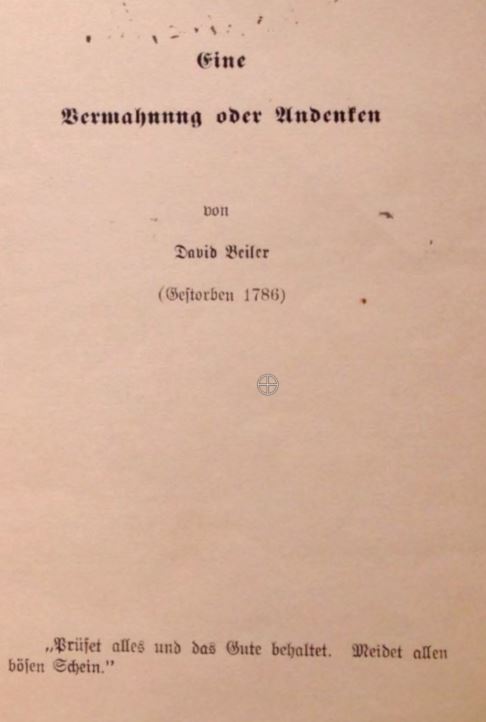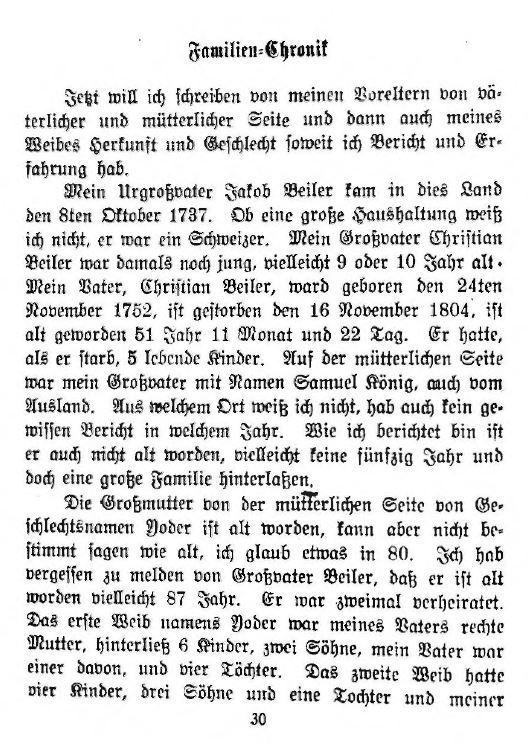Martin Lutz
As a Swabian from Stuttgart in southwestern Germany, I am frequently asked about my Anabaptist roots by Mennonites, Amish, and Hutterites I encounter during archival field trips. Lutz is not an Anabaptist household name, compared to Hofer, Krehbiel or Janzen. There are a few Lutz’s among American Anabaptists though. For example, during my research I came across a Mennonite named Clarence Lutz from the Lancaster Mennonite Conference. My father, from whom I inherited my last name, hailed from a small Franconian village in the region of Hohenlohe in northeastern Württemberg, not far from Anabaptist centers in the early modern period. But as far as I know, there are no direct Anabaptist connections in my family.
It would be another story to delve more into the question of why it seemed so unusual to American Anabaptists for an outsider would be interested in their history. Here, I will focus on a different topic: the role of kinship in modern societies.
Until recently, historiography held that kinship was a distinctly pre-modern form of social identity and organization. For the European context, this narrative suggested that kinship groups were a common, possibly dominant way of structuring social relationships in the Middle Ages and the early modern period. Modernization processes such as the emergence of the modern state, the market and voluntary associations then gradually replaced kinship’s societal functions.
Social historians David Sabean, Simon Teuscher and others have convincingly argued against this perspective: Far from losing ground, kinship structures outlived the threshold to modernity in Western societies. Indeed, Sabean and Teuscher consider the nineteenth century as a “‘kinship-hot’ society, one where enormous energy was invested in maintaining and developing extensive, reliable, and well-articulated structures of exchange among connected families over many generations.”1
In my previous work, I have looked at the case of the Siemens entrepreneurial family2 where these patterns appear as an important element in shaping business strategy in the nineteenth century. The Siemens Stammbaum (family tree) and various family institutions have since then played a considerable role in tying the various branches of the vast kin group (and its wealth) together.3

It appears that similar notions of kinship evolved among the Amish and Mennonites in nineteenth century America. I recently took a closer look at David Beiler’s memoir “Eine Vermahnung oder Andenken” from around 1860.4 Beiler was a prominent Amish bishop who was involved in the formation of the Old Order congregations in the 1860s and 1870s. He might be most famous for his book Das wahre Christentum, and his memoirs offer a rare glimpse into the perception of change by an Amishman in the nineteenth century. Less prominent in the scholarly literature is the Familien-Chronik at the end of Beiler’s memoir where he gives a detailed account of his ancestors.
For his and his wife’s paternal and maternal ancestors, Beiler outlines the Herkunft (ancestry) and Geschlecht (lineage). For each line, there is one distinct progenitor (Stammvater) listed as the point of origin. For example, Beiler’s great-grandfather Jakob Beiler, a Swiss Anabaptist, immigrated to America in 1737. On his maternal side, the progenitor was Samuel König, also an immigrant. Whenever the information available to him allows it, Beiler then lists the number of sons and daughters in each household (Haushaltung), and how many lived long enough to found their own families. It is somewhat striking how Beiler’s Familien-Chronik resembles contemporary European efforts to document and construct familial ancestry. As with the Siemens Stammbaum, it represents an effort to build shared ancestry as an imagined community, to borrow Benedict Anderson’s words.
The sociological and anthropological literature stresses the ongoing role of kinship relations among twentieth century Amish and other Anabaptist groups.5 The ubiquitous Mennonite “name game” certainly reveals the importance of ancestry even in the twenty-first century. Steven D. Reschly’s work on nineteenth century Amish demonstrates how these patterns were a crucial aspect in communal boundary maintenance and transmission of property across generations.6 This literature implies that the Amish kinship system is a rather specific form of social organization distinct from the majority society in the modernizing context of the United States and Canada.

As part of my overall research agenda, I am interested in how social relationships shaped economic interaction in the nineteenth and twentieth century. While the Siemens industrialists and the Amish farmer David Beiler appear to be on the opposite ends of a spectrum, I am convinced that their joint reference to the kin group holds important lessons for economic and social historians. If we follow Sabean’s and Teuscher’s larger interpretation of kinship in the nineteenth century, it would appear that Beiler’s Familien-Chronik fits perfectly with these larger developments in the Western world. At least in Beiler’s case, American Anabaptists appear to be as “kinship-hot” – and indeed as “modern” – as the emerging bourgeois class in Central Europe.
1. David W. Sabean and Simon Teuscher, “Kinship in Europe: A New Approach to Long Term Development,” in Kinship in Europe: Approaches to Long-Term Developments (1300-1900), ed. David W. Sabean, Simon Teuscher and Jon Mathieu (New York: Berghahn Books, 2007); Chapter I, 13.
2. Martin Lutz, Carl von Siemens: Ein Leben zwischen Familie und Weltfirma, 1829-1906 (München: C.H. Beck, 2013).
3. Siemens-Familienstiftung and Werner Siemens-Stiftung, Stammbaum der Familie Siemens: Aus Anlaß der 600jährigen Wiederkehr des ersten urkundlichen Nachweises des Namens Siemens in Goslar, 1984 neu bearbeitet von Sigfrid von Weiher (München: Selbstverlag, 1985).
4. David Beiler, Eine Verwahrnung oder Andenken, 1862, II-MS-29, Eastern Mennonite University Archive.
5. In the older literature, John A. Hostetler stresses the small-scale and genealogical embeddedness of Amish society. John A. Hostetler, Amish Society (Baltimore: Johns Hopkins University Press, 1993), 12 For more recent discussions see: Vlatka Škender, “Flesh, Freundschaft, and Fellowship: Towards a Holistic Model of the Amish Kinship System,” Journal of the Amish and Plain Anabaptist Studies 8, no. 1 (2020); John A. Cross, “Amish Surnames, Settlement Patterns, and Migration,” Names 51, 3-4 (2013).
6. Steven D. Reschly, The Amish on the Iowa Prairie, 1840 to 1910 (Baltimore, Md: Johns Hopkins Univ. Press, 2000), 119.
